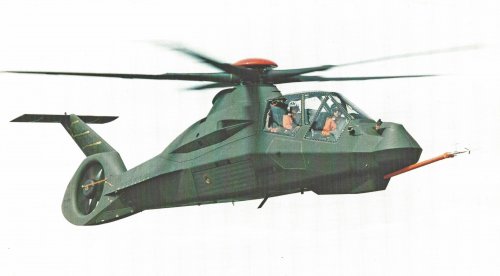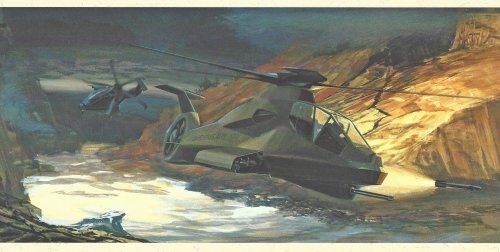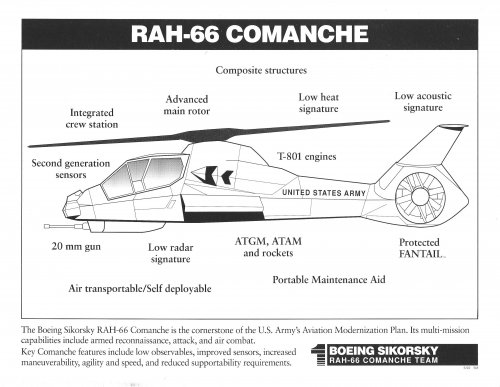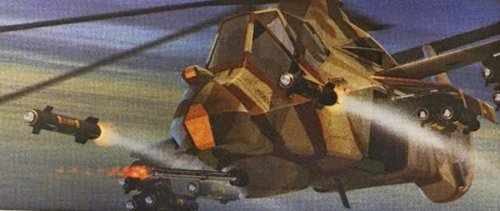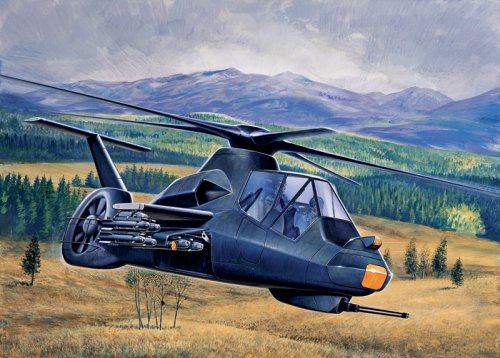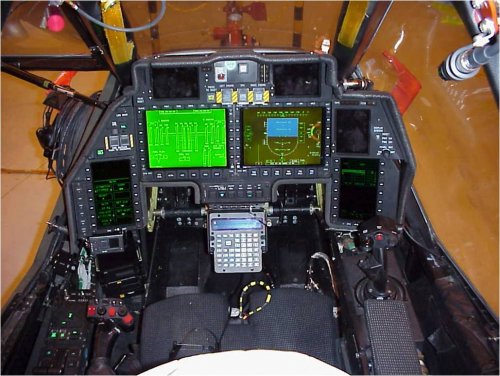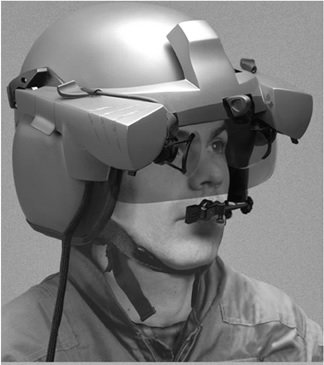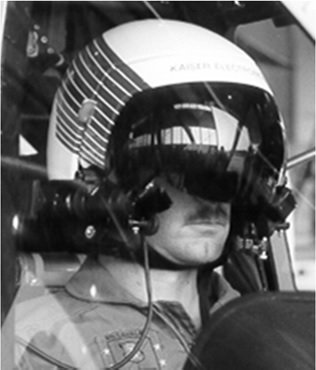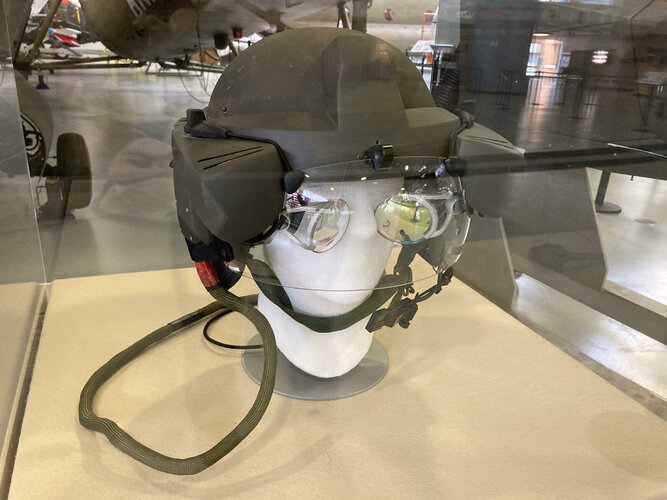You are using an out of date browser. It may not display this or other websites correctly.
You should upgrade or use an alternative browser.
You should upgrade or use an alternative browser.
Boeing/Sikorsky RAH-66 Comanche
- Thread starter Stuka
- Start date
- Joined
- 29 July 2009
- Messages
- 1,768
- Reaction score
- 2,467
The Helicopter Air-to-Air Combat IV test report is available at:
- Joined
- 29 July 2009
- Messages
- 1,768
- Reaction score
- 2,467
Another interesting air to air helicopter study was conducted in 1978 when the USAF's 20th SOS flew UH-1's and CH-53's (painted in Eastern Bloc paint schemes) as Aggressor (Red Force) aircraft against US Army AH-1 and OH-58 helicopters. The second phase included helicopter versus fighter jet aircraft.


PaveCave.com is for sale | HugeDomains
Get the premium .com domain you deserve. Seamless and professional transactions. Payment plans available.
pavecave.com
Last edited:
- Joined
- 29 July 2009
- Messages
- 1,768
- Reaction score
- 2,467
Colonial-Marine
UAVs are now friend, drones are the real enemy.
- Joined
- 5 October 2009
- Messages
- 1,468
- Reaction score
- 1,323
I know it's not my place to question the geniuses running things down in DC but perhaps Army aviation could have used some addition funding in 2004 that would have allowed for production of the RAH-66 while keeping upgrade plans for the CH-47, UH-60, and AH-64. Going through all that effort just to cancel it because of fears that it's going to eat the budget seems incredibly wasteful.
Going back even further I think axing the light utility helicopter from LHX was a mistake too. That could have had a lot of potential on the export markets even.
Could the RAH-66 return? I don't see why not if there is a willingness to accept that it is still going to cost a large sum of money to update the design and establish the chain of production. If you're looking for a survivable reconnaissance helicopter I think picking up where they left off might be smarter than starting with a clean sheet of paper.
FARA is a bit different though because of the focus on speed and I don't see a way you could achieve the sort of signature reduction the RAH-66 did while using a compound helicopter or tilt-rotor configuration. Although I don't think a tilt-rotor is in consideration for FARA anymore now that Bell said their offering will be derived from the Bell 525 instead of the V-280 Valor.
So I'd say if whatever Sikorsky offers based on the S-97 for FARA doesn't work out it should return. I suppose I shouldn't rule out the other contenders but Bell's offering of what is probably going to be a conventional design without extensive signature reduction doesn't seem like a great choice to me when there are other options on the table.
Going back even further I think axing the light utility helicopter from LHX was a mistake too. That could have had a lot of potential on the export markets even.
Could the RAH-66 return? I don't see why not if there is a willingness to accept that it is still going to cost a large sum of money to update the design and establish the chain of production. If you're looking for a survivable reconnaissance helicopter I think picking up where they left off might be smarter than starting with a clean sheet of paper.
FARA is a bit different though because of the focus on speed and I don't see a way you could achieve the sort of signature reduction the RAH-66 did while using a compound helicopter or tilt-rotor configuration. Although I don't think a tilt-rotor is in consideration for FARA anymore now that Bell said their offering will be derived from the Bell 525 instead of the V-280 Valor.
So I'd say if whatever Sikorsky offers based on the S-97 for FARA doesn't work out it should return. I suppose I shouldn't rule out the other contenders but Bell's offering of what is probably going to be a conventional design without extensive signature reduction doesn't seem like a great choice to me when there are other options on the table.
Mikoyan293
ACCESS: Restricted
- Joined
- 13 July 2020
- Messages
- 1
- Reaction score
- 0
Hello guys,
I am a scale modeller, been doing that since childhood, and ever since I am in love with the design of this helicopter.
Right now I am building one in 1/72 scale by modifying Revell's kit, which will be followed by 1/48th Italeri kit.
Is there any chance someone has more detailed photos of the rotor hub cover from the Ft Rucker bird?
Also I am interested in any photo/drawing of the open panels of the starboard side.
I had a chance to see it in 2016 but due to not having a Credit card I couldn't rent a car.....next time I will go straight there.
Best regards,
Stefan
I am a scale modeller, been doing that since childhood, and ever since I am in love with the design of this helicopter.
Right now I am building one in 1/72 scale by modifying Revell's kit, which will be followed by 1/48th Italeri kit.
Is there any chance someone has more detailed photos of the rotor hub cover from the Ft Rucker bird?
Also I am interested in any photo/drawing of the open panels of the starboard side.
I had a chance to see it in 2016 but due to not having a Credit card I couldn't rent a car.....next time I will go straight there.
Best regards,
Stefan
projectaurora
ACCESS: Restricted
- Joined
- 21 April 2021
- Messages
- 5
- Reaction score
- 4
beautiful!I believe this is the last iteration (there were two) of the Kaiser/Rockwell Collins Helmet Integrated Display Sighting System (HIDSS) prototypes for the Comanche before it was cancelled in 2004.
View attachment 615062
First Kaiser helmet mounted sights for Comanche: Wide-Eye
View attachment 615063
I never did understand why that program was cancelled
- Joined
- 9 October 2009
- Messages
- 21,944
- Reaction score
- 13,576
The insanity of the age, aka Transformation, to put it simply.
projectaurora
ACCESS: Restricted
- Joined
- 21 April 2021
- Messages
- 5
- Reaction score
- 4
still its not like they had to buy 300 of them
- Joined
- 11 March 2012
- Messages
- 3,247
- Reaction score
- 3,176
beautiful!I believe this is the last iteration (there were two) of the Kaiser/Rockwell Collins Helmet Integrated Display Sighting System (HIDSS) prototypes for the Comanche before it was cancelled in 2004.
View attachment 615062
First Kaiser helmet mounted sights for Comanche: Wide-Eye
View attachment 615063
I never did understand why that program was cancelled
i suspect that Comanche was cancelled because the US Army was too busy fighting wars in Afghanistan and Iraq. Factories were very busy overhauling helicopters that had "timed-out" in war zones. They even striped helicopters from Army Reserve and National Guard squadrons to keep up numbers in war zones.
RavenOne
ACCESS: Top Secret
- Joined
- 18 June 2008
- Messages
- 1,003
- Reaction score
- 2,675
Spot on the funding re UOR (Urgent Operational Requirement) was needed for sustainability / modification of the AH-64A/D, A/OH-58D, UH-60A/L, CH-47D in SW Asia.beautiful!I believe this is the last iteration (there were two) of the Kaiser/Rockwell Collins Helmet Integrated Display Sighting System (HIDSS) prototypes for the Comanche before it was cancelled in 2004.
View attachment 615062
First Kaiser helmet mounted sights for Comanche: Wide-Eye
View attachment 615063
I never did understand why that program was cancelled
i suspect that Comanche was cancelled because the US Army was too busy fighting wars in Afghanistan and Iraq. Factories were very busy overhauling helicopters that had "timed-out" in war zones. They even striped helicopters from Army Reserve and National Guard squadrons to keep up numbers in war zones.
Also the moving goalposts System requirements add ons (similar to the VH-71 Kestrel) escalated costs.
cheers
projectaurora
ACCESS: Restricted
- Joined
- 21 April 2021
- Messages
- 5
- Reaction score
- 4
why has it never been revisited by another branch like the navy, or marines?
FighterJock
ACCESS: Above Top Secret
- Joined
- 29 October 2007
- Messages
- 5,596
- Reaction score
- 5,923
why has it never been revisited by another branch like the navy, or marines?
I would have liked the US Marine Corp to have rescued the Comanche program and replace the AH-1W Cobra with it. It would have given the Marines a far more modern attack helicopter than the AH-1Z Viper.
- Joined
- 18 October 2006
- Messages
- 4,208
- Reaction score
- 4,901
Besides the reasons mentioned above, the overweight, over-budget Comanche was not marinized. USN had no mission and USMC had no budget (although I seriously doubt they had even a glimmer of interest.
Colonial-Marine
UAVs are now friend, drones are the real enemy.
- Joined
- 5 October 2009
- Messages
- 1,468
- Reaction score
- 1,323
Which doesn't seem to have been true judging from all of the programs to replace the Kiowa since then.I believe the Army also stated that the availability of UAS assets and the future of these technologies would offset the loss of the RAH-66's planned observation role when cancelled.
- Joined
- 29 July 2009
- Messages
- 1,768
- Reaction score
- 2,467
Pentagon Says It Plans to Kill Copter Program (Published 2004)
Pentagon cancels $38-billion Comanche helicopter program, weapons system from cold war era that was decades behind in development and faltered in face of new technology and concerns about military costs and budget deficits; program, which began in 1983 and did not produce single operational...
Agreed. The savings from the cancellation were supposed to go into the modernization of the Army's AH-64 and UAS. The UAS component certainly has expanded since then, but lacks the flexibility, situational awareness, and multi-tasking that a crewed OH-58 brought to the battlefield. FARA is the first and hopefully successful clean-sheet design for an OH-58's replacement since Comanche.
FighterJock
ACCESS: Above Top Secret
- Joined
- 29 October 2007
- Messages
- 5,596
- Reaction score
- 5,923

Pentagon Says It Plans to Kill Copter Program (Published 2004)
Pentagon cancels $38-billion Comanche helicopter program, weapons system from cold war era that was decades behind in development and faltered in face of new technology and concerns about military costs and budget deficits; program, which began in 1983 and did not produce single operational...www.nytimes.com
Agreed. The savings from the cancellation were supposed to go into the modernization of the Army's AH-64 and UAS. The UAS component certainly has expanded since then, but lacks the flexibility, situational awareness, and multi-tasking that a crewed OH-58 brought to the battlefield. FARA is the first and hopefully successful clean-sheet design for an OH-58's replacement since Comanche.
Lets hope that FARA succeeds where Comanche failed and enters service with the US Army.
Kat Tsun
eeeeeeeeeeeeeee
- Joined
- 16 June 2013
- Messages
- 1,369
- Reaction score
- 1,776
Which doesn't seem to have been true judging from all of the programs to replace the Kiowa since then.I believe the Army also stated that the availability of UAS assets and the future of these technologies would offset the loss of the RAH-66's planned observation role when cancelled.
It's just the dying gasps of the Loach mafia.
Between H-47/H-60, AH-64, and Grey Eagle the Army has basically all rotary wing and reconnaissance requirements covered more than adequately. The US Army would be better off buying way more Grey Eagles and arming them for the visual reconnaissance job. AH-64 can stick around as a local area drone controller and long range missile lobber, and just because it's there, really. Grey Eagle can tell people where things are and actually fly over dangerous areas of potential machine gun fire or missiles and shoot them with rockets. Then the Apaches...do something, I guess.
There's no particular need for something like Comanche though. Or FARA. Apache is fine in urban areas. So is H-47. And judging by the personal experience of every tea cup in my cabinets and pen on my desk being made to dance every Tuesday and Thursday night, H-60 has no trouble operating in cities or urban environments.
FARA is shaping up to be both more expensive and more complicated than AH-64E, which is ostensibly the opposite of what it should be. If there were ever a need for a reconnaissance helicopter, it should be cheaper, easier to maintain, and preferably able to operate at higher rates than an attack helicopter. Loach was (theoretically) cheaper and simpler to operate than an AH-1, and flew at higher rates, and correspondingly lost more often in Vietnam. Kiowa, at least until "Kiowa Warrior" because the 82nd isn't allowed AH-64s, was the same for Apache.
Grey Eagle (or possibly an MQ-9 variant) is the real Kiowa replacement, the Army just hasn't fully digested this thought, yet.
FWIW, it isn't clear what Apache can do in this situation besides act as redundancy (not bad, but not particularly flashy, and there's no reason you can't use an armed H-60 with Spike NLOS instead like the various European tank buster choppers being HeliTOW utilities) and possibly another station for a drone operator, though.
Perhaps Apaches could be parceled out in platoon sized mini-FARPs closer to the battle area than the airbase constrained Grey Eagle, though, although at least Spike NLOS means they don't actually need to get in range of something like Tor or Pantsir and try to slug it out with a supersonic missile slinger. Thus Grey Eagle becomes the ideal of the reconnaissance-fire platform, since it's robotic and flies high, but perhaps the Apache is the austere equivalent. Or the Apache becomes the flying magazine for the Grey Eagle's admittedly meager weapons payloads, but there's no realistic target set that requires more than a dozen or so anti-tank missiles these days.
A drone's objectively higher sortie rates probably mean the time differences of a Apache being forward based and a Grey Eagle flying continuous combat patrol is still in the Grey Eagle's favor, though. Even if it has to fly longer to transit it can stay on station for an order of magnitude longer and requires two times fewer drones for an equivalent aircraft availability. This would hold true for Predator as well, I suppose, since it's not much different from Grey Eagle.
OTOH the Army has a lot of Apaches available now, which is always a good selling point. It just means that Apache's future will be in doubt when the Army wakes up to the fact that robotic drones are the new Kiowa Warrior. Drones' only real weakness at the moment is reliance on airbase infrastructure, which is few and far between relative to "flat dirt spot with a couple trucks".
Last edited:
- Joined
- 29 July 2009
- Messages
- 1,768
- Reaction score
- 2,467
Kat Tsun, you are correct in that the Grey Eagle/Apache teaming being the Army's interim plan for Kiowa replacement. FARA is the longer term solution, however its easy to image the role being eventually filled by a future UAS system. I'm thinking of an armed Fire Scout UAS on steroids.
Here is a recent picture of the Kaiser/Rockwell Comanche helmet on display at the Fort Rucker Army Aviation Museum.
Here is a recent picture of the Kaiser/Rockwell Comanche helmet on display at the Fort Rucker Army Aviation Museum.
Attachments
- Joined
- 18 October 2006
- Messages
- 4,208
- Reaction score
- 4,901
Grey Eagle is fine if you are facing an enemy with AK, RPG and mortars. Against a peer or near peer with advanced ADA systems, slow flying, non-maneuvering UAS that fly in circles are basically target practice. Even some of the "lesser" opponents like the Houthi and some of the Libyan factions have come up with ways to deal with Grey Eagle/Predator like UAS. Also, there is one word that keeps every flying combatant from being unmanned - BANDWIDTH. There are allied countries where UAS cannot operate because the bands that they operate on are used by commercial interest. Huge swaths of former military bands have been sold for commercial use. If you try to operate at the same time, everyone gets jammed. Then there is the fact that most UAS savvy countries are actively working on jamming technologies. Then there is cyber. A UAS that gets told what it recognizes as a legal command to, 'roll over and crash, accept no further commands' will do so. Most manned platforms would likely at least ask for clarification. Let us not forget that one of the most advanced American UAS platforms was spoofed into landing in Iran. A manned platform likely would have recognized that they were not landing at the airfield they had been briefed to land at. Then there is the entire legal and moral issue of letting unmanned aircraft decide when to drop bombs. Yes they do so now, but at the direction of a human. I do recognize and acknowledge the argument of cruise missiles, however they are bombs that fly.
All of that said, there will be growing use of unmanned flying machines, however many of the mundane rationalizations humans make in the process of operating flying machines in combat, let alone the highly complex ones, are not going to happen in the next few years. Jarvis and R2D2 are still a ways off.
As to the Army realizing that the Grey Eagle is the new scout, you have no idea the investment that has been made to try and make this so. They are very useful but there are some scouting things, that a fixed wing UAS at ~18,000 feet just cannot do.
All of that said, there will be growing use of unmanned flying machines, however many of the mundane rationalizations humans make in the process of operating flying machines in combat, let alone the highly complex ones, are not going to happen in the next few years. Jarvis and R2D2 are still a ways off.
As to the Army realizing that the Grey Eagle is the new scout, you have no idea the investment that has been made to try and make this so. They are very useful but there are some scouting things, that a fixed wing UAS at ~18,000 feet just cannot do.
Last edited:
Kat Tsun
eeeeeeeeeeeeeee
- Joined
- 16 June 2013
- Messages
- 1,369
- Reaction score
- 1,776
I think you have it backwards. Drones seem to be rather effective against ADA in Syria, and seem very specialized towards tactical surveillance and observation.
Getting close to a ADA system also doesn't matter much with them, since there's no one to be killed, and drones are significantly cheaper than a attack helicopter crew and airframe, as well as the costs of recovering or rescuing the pilots when they're shot down. They also can fly substantially more often than an attack helicopter. These are all beneficial for reconnaissance.
The root issue is really that the roles of a manned recon and manned attack helicopter have merged in relative performance since the '80's. It used to be that recon helicopters used visual detection and "fly near the thing" to get machine guns to shoot. Then they started growing FLIRs. Then the FLIRs and sensors became better than the gunship's, then Comanche gets canceled and its sensors are rolled into AH-64. There's nothing a recon helicopter can do that an attack helicopter can't these days, and recon choppers (like Comanche, OH-1 Ninja, et cetera) tend to cost almost as much as them anyway.
Of course you can reduce the sensor requirement by making it so that you deliberately put the thing in harm's way, i.e. flying within weapon range of a missile or cannon, and looking for them through a camera. That's unacceptable for a reconnaissance helicopter. It's workable for a drone. Drones are also cheaper to operate, maintain, and train to fly than an attack helicopter. They can be controlled through multiple bands, too, such as UHF or SHF/EHF, and all three. Tactical jamming isn't a panacea against the drone threat. It's pretty much impossible to jam a SHF link, for one, and patching software to get rid of exploits that led to things like the RQ-170 loss already happen, which is why no one has replicated it.
If the drone's purpose is tactical reconnaissance for a gunship then it can just be paired with the gunship. It doesn't literally have to be a Grey Eagle, it can be something like the A160 Hummingbird, or an RQ-7 Shadow, or whatever. The gunner can fly the drone over suspect areas to draw fire like the Loaches did in Vietnam, and then kill those things with long range missiles. Target marked by the burning robot. It's more a return to form in practice I guess.
The only thing it requires is making drones relatively (to a helicopter) cheap. Turkey does this, so it's not impossible that America can as well.
If FARA were to be a replacement for AH-64 then it would probably make sense, though, but it's always been discussed as a supplement or companion to AH-64. Seems relatively backwards thinking, since FARA will likely carry better everything than AH-64 at the end of the day, without being either significant cheaper to buy or operate (assuming it isn't more expensive in the first place).
Getting close to a ADA system also doesn't matter much with them, since there's no one to be killed, and drones are significantly cheaper than a attack helicopter crew and airframe, as well as the costs of recovering or rescuing the pilots when they're shot down. They also can fly substantially more often than an attack helicopter. These are all beneficial for reconnaissance.
The root issue is really that the roles of a manned recon and manned attack helicopter have merged in relative performance since the '80's. It used to be that recon helicopters used visual detection and "fly near the thing" to get machine guns to shoot. Then they started growing FLIRs. Then the FLIRs and sensors became better than the gunship's, then Comanche gets canceled and its sensors are rolled into AH-64. There's nothing a recon helicopter can do that an attack helicopter can't these days, and recon choppers (like Comanche, OH-1 Ninja, et cetera) tend to cost almost as much as them anyway.
Of course you can reduce the sensor requirement by making it so that you deliberately put the thing in harm's way, i.e. flying within weapon range of a missile or cannon, and looking for them through a camera. That's unacceptable for a reconnaissance helicopter. It's workable for a drone. Drones are also cheaper to operate, maintain, and train to fly than an attack helicopter. They can be controlled through multiple bands, too, such as UHF or SHF/EHF, and all three. Tactical jamming isn't a panacea against the drone threat. It's pretty much impossible to jam a SHF link, for one, and patching software to get rid of exploits that led to things like the RQ-170 loss already happen, which is why no one has replicated it.
If the drone's purpose is tactical reconnaissance for a gunship then it can just be paired with the gunship. It doesn't literally have to be a Grey Eagle, it can be something like the A160 Hummingbird, or an RQ-7 Shadow, or whatever. The gunner can fly the drone over suspect areas to draw fire like the Loaches did in Vietnam, and then kill those things with long range missiles. Target marked by the burning robot. It's more a return to form in practice I guess.
The only thing it requires is making drones relatively (to a helicopter) cheap. Turkey does this, so it's not impossible that America can as well.
If FARA were to be a replacement for AH-64 then it would probably make sense, though, but it's always been discussed as a supplement or companion to AH-64. Seems relatively backwards thinking, since FARA will likely carry better everything than AH-64 at the end of the day, without being either significant cheaper to buy or operate (assuming it isn't more expensive in the first place).
Last edited:
chimeric oncogene
ACCESS: Secret
- Joined
- 23 May 2019
- Messages
- 347
- Reaction score
- 429
Starlink is already in play, and the USSF is putting up a Transport Layer (one of the contractors is, you guessed it, Starlink) for a Starlink of their own.BANDWIDTH
- Joined
- 18 October 2006
- Messages
- 4,208
- Reaction score
- 4,901
Well at least we can agree that we think the other has it essentially backwards.I think you have it backwards. Drones seem to be rather effective against ADA in Syria, and seem very specialized towards tactical surveillance and observation.
Getting close to a ADA system also doesn't matter much with them, since there's no one to be killed, and drones are significantly cheaper than a attack helicopter crew and airframe, as well as the costs of recovering or rescuing the pilots when they're shot down. They also can fly substantially more often than an attack helicopter. These are all beneficial for reconnaissance.
The root issue is really that the roles of a manned recon and manned attack helicopter have merged in relative performance since the '80's. It used to be that recon helicopters used visual detection and "fly near the thing" to get machine guns to shoot. Then they started growing FLIRs. Then the FLIRs and sensors became better than the gunship's, then Comanche gets canceled and its sensors are rolled into AH-64. There's nothing a recon helicopter can do that an attack helicopter can't these days, and recon choppers (like Comanche, OH-1 Ninja, et cetera) tend to cost almost as much as them anyway.
Of course you can reduce the sensor requirement by making it so that you deliberately put the thing in harm's way, i.e. flying within weapon range of a missile or cannon, and looking for them through a camera. That's unacceptable for a reconnaissance helicopter. It's workable for a drone. Drones are also cheaper to operate, maintain, and train to fly than an attack helicopter. They can be controlled through multiple bands, too, such as UHF or SHF/EHF, and all three. Tactical jamming isn't a panacea against the drone threat. It's pretty much impossible to jam a SHF link, for one, and patching software to get rid of exploits that led to things like the RQ-170 loss already happen, which is why no one has replicated it.
If the drone's purpose is tactical reconnaissance for a gunship then it can just be paired with the gunship. It doesn't literally have to be a Grey Eagle, it can be something like the A160 Hummingbird, or an RQ-7 Shadow, or whatever. The gunner can fly the drone over suspect areas to draw fire like the Loaches did in Vietnam, and then kill those things with long range missiles. Target marked by the burning robot. It's more a return to form in practice I guess.
The only thing it requires is making drones relatively (to a helicopter) cheap. Turkey does this, so it's not impossible that America can as well.
If FARA were to be a replacement for AH-64 then it would probably make sense, though, but it's always been discussed as a supplement or companion to AH-64. Seems relatively backwards thinking, since FARA will likely carry better everything than AH-64 at the end of the day, without being either significant cheaper to buy or operate (assuming it isn't more expensive in the first place).
trajan
ACCESS: Confidential
- Joined
- 23 October 2020
- Messages
- 160
- Reaction score
- 346
Since 1982 LHX started. US Army tried their best to protect this programme.
In 2003 this programme came to EMD stage and produced at least 5 EMD prototypes.
However in February 23 2004 it finally stoppedԾ‸Ծ because of anti terrorism war and UAVs uprising.
My friend found an old magazine with a lot of RAH66 information and PD pictures.I will try to photo them.
As a memory of the last totally new helicopter programme in nearly 30 years.(if S97 and “warrior” included)(╥ω╥`)
In 2003 this programme came to EMD stage and produced at least 5 EMD prototypes.
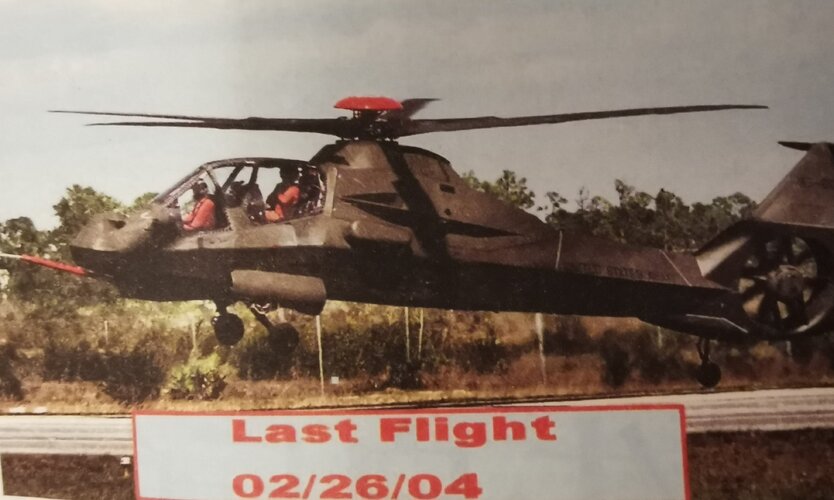
However in February 23 2004 it finally stoppedԾ‸Ծ because of anti terrorism war and UAVs uprising.
My friend found an old magazine with a lot of RAH66 information and PD pictures.I will try to photo them.
As a memory of the last totally new helicopter programme in nearly 30 years.(if S97 and “warrior” included)(╥ω╥`)
Do you have the Operational Capability # 23 report, or at lest the specifications it requires? Iv been looking and nothing is coming up.yasotay said:The decision to go with a conventional helicopter was dictated by the Secretary of the Army. Fearing a long process to bring new technology to fruition, it was directed. RAND Corp. did a study on ten attributes for the aircraft and used senior Army aviation (warrant) officers to do the simulation runs to compare a conventional rotorcraft and a tilt rotor LHX. At the end of the study these officer had assessed that six of ten were performed better by the tilt rotor, two were tied and two were better executed by the conventional rotorcraft. Ironically the two done better by standard rotorcraft were reconnaissance and security missions. The SecArmy's position was validated. RAND recommended a conventional helicopter for the mission be built but that the Army continue to look seriously at tilt rotor technology for other missions. A recommendation promptly ignored, other than a conventional rotorcraft.
If both the Army and the Marine Corps had gone to tilt rotor a number of rotorcraft industries would have been at risk of going out of business due to inability to compete with the new technology.
Basically agree. Points of contention would be that there wasn't much to indicate that a Tilt-Rotor would take longer to develop than a conventional brand new helo Sikorsky, BTW, originally proposed an ABC aircraft with a V-Tail, but that wouldn't have gone very far because of the high risk associated with the design.
Requirement of Operational Capability # 23, the foundation of the original LHX solicitation, asked for so much that it's doubtful that anything but a Tilt-Rotor could have pulled it off. there was some thought that the requirement would be split into two: LHX-Scat, which is basically what eventually became in less capable form the RAH-66 and would probably be a Tilt-Rotor, and LHX-Util, which would have some of the requirements backed off to let conventional helos have a chance. LHX-Util eventually got dropped from the program. However, the the Army, again for reasons not disclosed, unilaterally over three additional ROCs lowered the requirements (not just speed) to a point where a conventional rotorcraft was viable. In fact, the final solicitation included constraints (max aircraft weight and max engine power, among others ) that made it impossible for a Tilt-Rotor to meet. Ironically, Comanche missed those requirements and they had to be relaxed to a point where a Tilt-Rotor was viable. To make sure that the message got across, the solicitation specifically required a conventional rotorcraft.
As you intimated, the purpose of the RAND study was to validate the decision that had already been made. Tilt-Rotor still came out better 83% of the time, and that's assuming the conventional rotorcraft met its promises. Keep in mind that LHX-Scat involved much more than just recon, but all other missions were ignored in the justification if a conventional helo didn't come out on top. Didn't matter, they got the answer they wanted. So, Bell and Boeing walked away from Tilt-Rotor and bid conventional helos, teaming up with MDD Helicopters and Sikorsky, respectively. I wonder if the reason that SuperTeam lost was because its NOTAR might not have been as "conventional" as Sikorsky's shrouded tail rotor?
I absolutely agree with your last sentence, that is my personal belief for the motivation behind lowering the requirements. To me that's just sad...if you've got the better technology and are willing to invest your own money in it (as Bell and Boeing did), then you should reap the rewards.
Springtime
ACCESS: Confidential
- Joined
- 27 July 2020
- Messages
- 60
- Reaction score
- 71
So with more Capable UAV/UCAV becoming cheaper and more effective against Conventional Army's along with Improvements to the AH-64D/E and other new US Army Anti-Armore Systems available for the 2020's.
How would the RAH-66 even be used by the US Army in 2021/2022 taking hindsight is 20/20. into account because after reading this thread am starting to think it would have been seen as a waste of money with Afghanistan and Iraq and and even Syria considered
I'd imagine that Ukraine or Poland or the Baltic States Sweden and North Korea would be seen as prime areas for redemption or justification for the RAH-66 had it gone into service
How would the RAH-66 even be used by the US Army in 2021/2022 taking hindsight is 20/20. into account because after reading this thread am starting to think it would have been seen as a waste of money with Afghanistan and Iraq and and even Syria considered
I'd imagine that Ukraine or Poland or the Baltic States Sweden and North Korea would be seen as prime areas for redemption or justification for the RAH-66 had it gone into service
- Joined
- 18 October 2006
- Messages
- 4,208
- Reaction score
- 4,901
By this time had, RAH-66 come to fruition, it would most likely have become the mobile hub for a number of UAV operating forward. The crew would be getting nascent AI directed reports (some of the software required for RAH-66) with which to determine how best to prosecute targets or what information is relayed to higher HQ per the commanders guidance. Because of its features it could remain further forward than say an AH-64, while letting the "cheaper" UAS take to brunt of all the threat air defense systems.
isayyo2
Lurker alert
- Joined
- 24 November 2011
- Messages
- 1,131
- Reaction score
- 2,324
Reading over documents from the Objective Force/Future Combat System era, the Comanche was to be the bridge between UAVs and the nascent Force XXI and other Joint data link systems. Interestingly enough, 12 Comanches were to be organically assigned to the FCS brigades in their RSTA squadrons, along with a Troop of Class IV UAVs (XM157/MQ-8B).
Here's a neat quote from MG Bergantz (Comanche's Program Manager) from 2001 https://asc.army.mil/docs/pubs/alt/...ations_Contribution_Transformation_200205.pdf
And the proposed FCS RSTA Squadron toe

 www.scribd.com
www.scribd.com

Here's a neat quote from MG Bergantz (Comanche's Program Manager) from 2001 https://asc.army.mil/docs/pubs/alt/...ations_Contribution_Transformation_200205.pdf
When fielded, the Comanche will synchronize joint and Army sensors and weapons with situational understanding. This will allow combat leaders to See First, Understand First, Act First, and Finish Decisively ... while reducing the risk of fratricide. The technology evolving with the Army’s Future Combat Systems (FCS) will provide Comanche with enablers to control a wide range of nonorganic threats including robotic guns, loitering attack munitions, and precision attack missiles. Moreover, Comanche will interface with un-manned aerial vehicles, unattended internetted sensors, hyperspectral imagery, and cue joint/combined command and control (C2).
And the proposed FCS RSTA Squadron toe
FY 07 URS Update Final 17 Aug 07 | PDF | Military Science | Military Organization
The attached Unit Reference Sheet was approved by the Director, Army Capabilities Integration Center on 17 AUG 2007. Increment 1 Threshold Design provides an update at URS level of details to the FBCT structure projected for 2014. FFID will continue to refine this data as required.
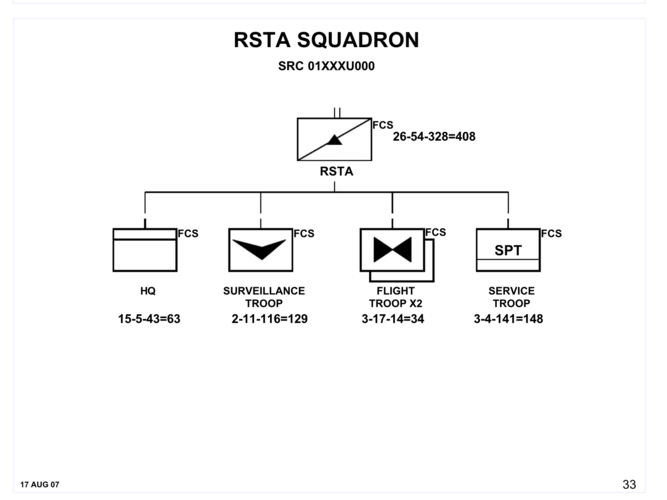
Last edited:
turboshaft
ACCESS: Restricted
- Joined
- 11 February 2007
- Messages
- 48
- Reaction score
- 21
The mix was to be 12 Comanches and 8 MQ-8Bs. Block I Comanches (121 of which were planned to come off the line prior to cancellation) would have only received data from the VTUAVs, while the later Block II Comanches would have had full control via TCDL (with each RAH-66 envisaged as controlling up to two VTUAVs, to avoid crew workload saturation).
The MQ-8B would have badly struggled to keep pace with the Comanche, but it was only seen as a supporting asset. Per Comanche PM Bob Birmingham, from September 2003: “I do get disturbed at all this hype over UAVs. It’s a Comanche that’s going to bring real usable visibility to commanders, not them.”
The MQ-8B would have badly struggled to keep pace with the Comanche, but it was only seen as a supporting asset. Per Comanche PM Bob Birmingham, from September 2003: “I do get disturbed at all this hype over UAVs. It’s a Comanche that’s going to bring real usable visibility to commanders, not them.”
- Joined
- 18 October 2006
- Messages
- 4,208
- Reaction score
- 4,901
Had Comanche entered service as "the quarterback" of the battlefield, I suspect the amount of UAV it controlled would have been increased as more autonomy was added to the UAV. The Comanche had even back in the day a system that surveyed the battlefield, then provided the aircrew with pictures of likely targets for the crew to look at and decide if they represented targets or not. If it was a target the coordinates could be transmitted so that artillery or air ordnance could be dropped on the target. A good scout always tries to use other peoples ammo, keeping the onboard for their own protection. Launching a missile, rocket, or firing the gun at night usually shows folks where you are. Scouts would prefer not to be seen.
I mentioned elsewhere that while UAV are good assets, they cannot understand the commanders intent. People sitting in boxes far from the commander likewise have little opportunity to be involved in the ground commanders planning and preparations for operations. Manned platforms can land next to the commanders command post and meet face-to-face with the commander and his/her staff. UAV are good at surveillance, manned platforms are good at reconnaissance.
I mentioned elsewhere that while UAV are good assets, they cannot understand the commanders intent. People sitting in boxes far from the commander likewise have little opportunity to be involved in the ground commanders planning and preparations for operations. Manned platforms can land next to the commanders command post and meet face-to-face with the commander and his/her staff. UAV are good at surveillance, manned platforms are good at reconnaissance.
isayyo2
Lurker alert
- Joined
- 24 November 2011
- Messages
- 1,131
- Reaction score
- 2,324
More fun quotes from the period, found in a 2003 Master's Thesis on DTIC:
Considerations for the Maneuver Commander: Could the Emergence of Unmanned Aerial Vehicles Spell the Demise of the Army's RAH-66 Comanche in the Armed Reconnaissance Role?
Considerations for the Maneuver Commander: Could the Emergence of Unmanned Aerial Vehicles Spell the Demise of the Army's RAH-66 Comanche in the Armed Reconnaissance Role?
We are prepared for the arrival of the Comanche in the year 2009. Comanche will be a revolutionary cornerstone of the objective force and this networked C4ISR system architecture. It will provide the essential situational curiosity and judgment - you don't get that in an unmanned system--the situational curiosity and judgment that only comes with manned surveillance and reconnaissance assets. Augmented with unmanned aerial vehicles, Comanche will transform army aviation's contributions to the joint warfight by satisfying our most critical, current battlefield deficiency--armed reconnaissance.
General Eric Shinseki, October 22, 2002, AUSA Speech
I spent a lot of time working with the RAH-66. Much of it with simulation work. The cockpit and MEP was by far the most advanced for a rotorcraft. While I did not fly the Comanche I knew many of the Army aviators who did work the actual aircraft. It was a good flying bird, even with it being very overweight.
The Army did make the right decision to cancel the program. The funding from Comanche will now allow for ~300 ARH(Bell 407), ~300 LUH(BK 117), 40 JCA(C-27J), new CH-47F, new UH-60M, new ASE and other kit. While the money does not buy all of the airframes I mention, you can get an idea of how much money was tied into one program.
Before I get on a dissertation of the impact of Comanche on the US rotorcraft technology sector, I think buried somewhere on my hard drive at work, I have a three view of the EMD/LRIP aircraft configuration. If memory serves me, the most outstanding visible differences had to do with the canopy layout and the addition of increased air inlet size (immediately below the engine inlet) to provide more ambient air to the IR suppression.
Edit: found the three view for EMD/LRIP. Hope this is what you are looking for...
I just picked up a helicopter sim yesterday from an auction. It's a Comanche Portable Cockpit....it might be the one you worked on several years back. It was in Huntsville, AL.
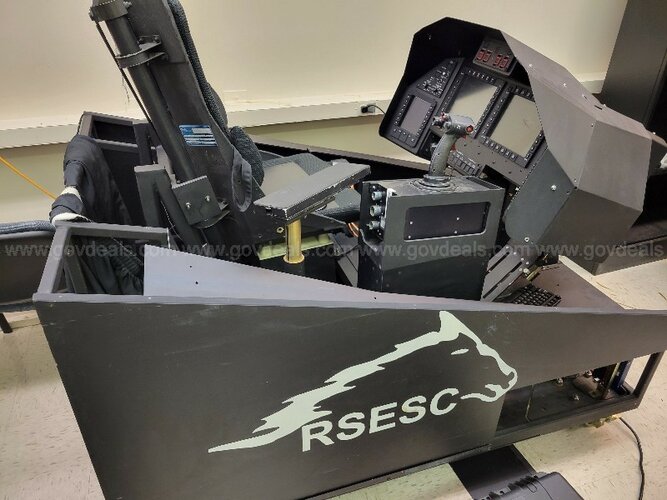
Attachments
- Joined
- 19 July 2016
- Messages
- 4,270
- Reaction score
- 3,454
I could really go for something like that but it's like an 8th of my flat on it's own. Bleep bleep. Still only 7 steps to get a cup of tea/coffee though so I will manage.
- Joined
- 18 October 2006
- Messages
- 4,208
- Reaction score
- 4,901
LOL- Indeed I think that is one of two cockpits that resided in a trailer we used for our work. Hope it works well for your desires. If you ever decide you no longer want/need the simulator you might be able to sell it to the Army Aviation Museum at Fort Rucker.
Similar threads
-
-
-
-
-
Bell Boeing V-22 Osprey - Development and Proposed Variants
- Started by JC Carbonel
- Replies: 308

